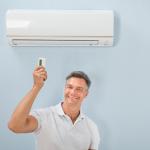
Boosting Your Home Efficiency: Top Energy-Saving Improvements
Understanding Energy Efficiency: An In-Depth Analysis
Energy efficiency signifies utilising less energy to perform identical tasks, decreasing energy wastage. In the household, it bears vital implications. For instance, efficient energy usage reduces the burden on your pocket, curbing your energy bills. The positive impact also extends to the environment, as it minimises carbon emissions—contributing significantly to the global efforts of mitigating climate change.
Understanding the areas of a typical Australian household where the energy drain is greatest offers direction for initiating efficiency improvements. These areas encompass heating, cooling, water heating, electronic appliances, and lighting. Opportunities for conservation lie in these areas; by harnessing them, improvements can yield large-scale energy savings.
Main Domains for Energy Efficiency Upgrades
Energy efficiency in your home revolves around five critical areas: insulation, appliances and electronics, heating and cooling systems, lighting, and water usage. Inefficiencies stem from outmoded appliances, unsuitable use, or ineffective systems. Homeowners may notice that feeble insulation or energy-gobbling appliances significantly increase energy bills. Nevertheless, decisive measures can correct these shortcomings, optimising these areas at a manageable cost.
Prime Energy-Saving Modifications for an Optimised Home
Homeowners seeking significant energy savings can explore various avenues, such as investing in energy-efficient appliances, reinforcing insulation, installing energy-conserving lighting, enhancing heating and cooling systems, and curtailing water usage.
Energy-efficient appliances, particularly those with an ENERGY STAR rating, have demonstrated the potential to shrink energy bills by almost 30%. Similarly, bolstering home insulation reduces reliance on heating and cooling utilities by nearly 20%, reducing energy overheads.
Another area of focus is energy-saving lighting alternatives, like LED bulbs. Replacing traditional energy-devouring incandescent bulbs with energy-saving ones can augment energy savings, cutting energy consumption by up to 75%.
Although the initial investment may seem substantial, the resulting long-term savings and environmental benefits balance the scales. Moreover, government incentives and rebates for energy-efficient appliances and initiatives can cushion the harshness of the initial costs, making these improvements much more approachable.
Crafting a Lasting Strategy for Energy Efficiency
Realising a continuous energy-efficient home extends beyond immediate infrastructural updates. It necessitates a comprehensive, enduring strategy to sustain the improvements made. This strategy encompasses regularly auditing your home's energy use, timely and appropriate appliance upkeep, conscious decision-making when purchasing new appliances, and a conscious commitment to an energy-efficient lifestyle.
Challenges such as keeping up with new energy-saving technologies and resisting attractive, cheaper, but less energy-efficient alternatives can hinder this plan. Yet, understanding energy bills and the benefits, operation, and maintenance of energy-efficient products can embolden homeowners to maintain their homes’ efficiency over time.
Conclusion
Promoting energy efficiency at home is crucial to sustainable lifestyles, monetary savings, and enhanced home comfort. Focusing on pivotal areas like insulation, appliances, heating and cooling systems, lighting, and water usage enables homeowners to trigger and sustain influential energy-saving reforms.
Despite the initial costs and possible challenges, sustainable home modifications and upgrades are worthy investments. Their implementation brings immeasurable value in the long run – financial relief, peace of mind, and conservation of resources. Hence, starting your energy-efficient journey today can secure an economical, eco-friendly home of tomorrow. Remember, every energy-saving effort today significantly contributes to a more sustainable and desirable future.



